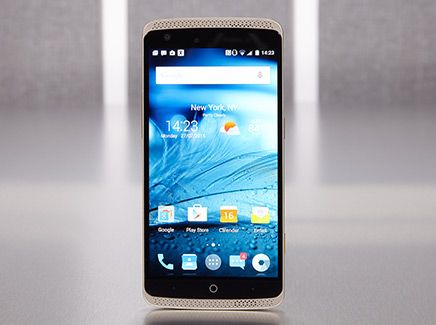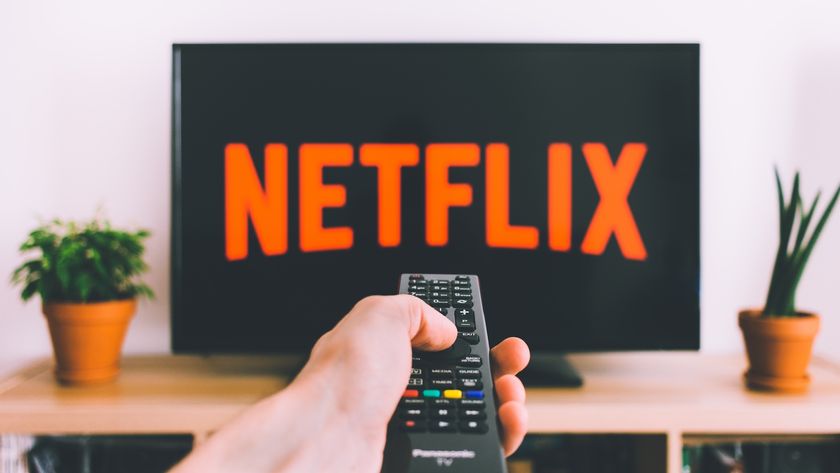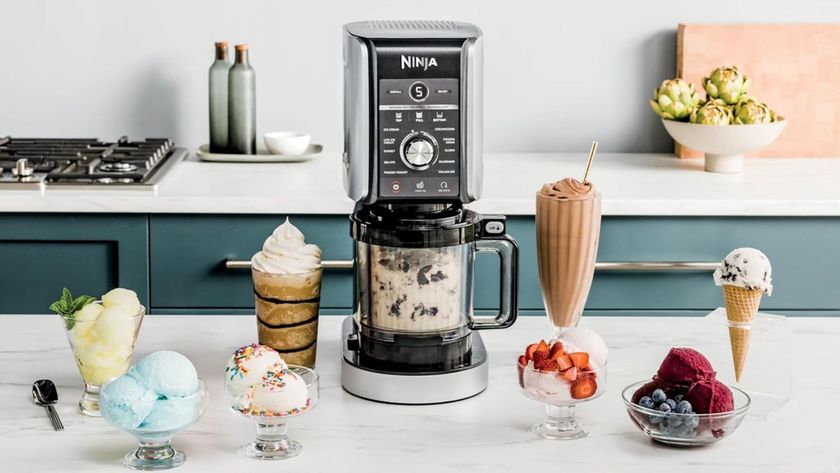Tom's Guide Verdict
The ZTE Axon Pro has a stunning display and fantastic hi-fi sound, but its design and battery life disappoint.
Pros
- +
Bright and sharp 5.5-inch screen
- +
Outstanding hi-fi audio
- +
Shoots 4K video
- +
Cool mode to adjust focus in pictures
Cons
- -
Unattractive design
- -
Short battery life
- -
Glitchy software
Why you can trust Tom's Guide
Who it's for: Multimedia gluttons who desire a superior screen and sound.
The ZTE Axon Pro is quite a departure from the company's usual "affordable premium" phones. Aiming for a more luxurious vibe, the Axon ($449 unlocked) boasts hi-fi audio, and it's armed with a dual-camera setup that promises faster, better shooting. Add in a metallic body, 4GB of RAM and a vibrant quad-HD screen, and you've got the makings of a winner. However, an off-putting design and other flaws keep the Axon from being awesome.
Design
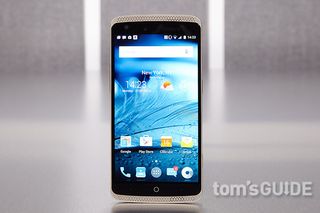
The Axon Pro is definitely different from boring rectangular ZTE phones of old. Unfortunately, it looks strikingly similar to a couple of smartphones we've seen lately. Sporting the same slightly curved rear and rounded rectangle silhouette as the LG G4 and Asus ZenFone 2, the Axon Pro also has grille-pattern accents on its front bezel and rear camera.
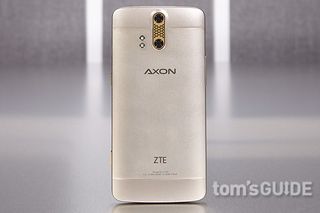
I get that ZTE wants to make the Axon stand out with its grille pattern, but the look is not for everyone. It adds clutter and almost looks like a line of zits or pockmarks on an otherwise smooth face. Other than that, I really like the Axon's smooth, aluminum-gold chassis, which gives the phone a premium look and feel. The phone also comes in blue and chrome.

In addition to a power button, the phone's right side houses a dedicated camera shutter button. On the left edge is a volume rocker and a SIM card slot, and a 3.5mm headphone jack and micro-USB port sit on the top and bottom, respectively. There is no microSD card slot for expandable storage.
Even though it felt somewhat large, the Axon Pro (6.0 x 2.9 x 0.37 inches) is actually about the same size as the Alcatel Onetouch Idol 3 (6.0 x 2.9 x.0.29) and the OnePlus One (6.0 x 2.9 x 0.35). Because of its curved rear, though, the Axon is thicker than the Alcatel and the OnePlus. The Asus ZenFone 2 is larger than the Axon Pro, at 6.0 x 3.0 x 0.15-43 inches.
At 6.1 ounces, the Axon Pro is heavier than the Idol 3 (4.85 ounces), the OnePlus One (5.7 ounces) and the ZenFone 2 (6 ounces).
Display
Watching YouTube videos or Netflix on the Axon Pro is quite a treat. The handset's 5.5-inch, 2560 x 1440-pixel display makes graphics and text look brilliant. Green grass and yellow police tape were vibrant in a 1080p trailer for Cop Car, and I could easily make out every hair on Kevin Bacon's ridiculous, bushy mustache.
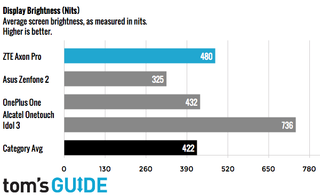
Registering 480 nits on our light meter, the Axon Pro's display is brighter than the average smartphone (395 nits), the ZenFone 2 (325 nits) and the OnePlus One (432 nits). However, it's dimmer than the luminous Onetouch Idol 3 (736 nits).
MORE: Best Smartphones on the Market Now
Producing 106.7 percent of the sRGB spectrum on our colorimeter, the Axon Pro's display is plenty colorful. That's more than the OnePlus One (92.7 percent), the Idol 3 (93.7 percent) and the ZenFone 2 (96 percent).

This is also one of the most accurate panels in the market. Notching a Delta-E rating of 2.54 (closer to 0 is better), the Axon Pro's screen reproduces truer hues than the OnePlus One (8.6) and the ZenFone 2 (8.5), though the Idol 3's screen is just about as accurate (2.55).
Audio
Your music will sound miles better on the Axon Pro. The device has dual sound processors and dual microphones for high-fidelity (hi-fi) sound, but that will only work when you have stereo earbuds plugged in. (Our Axon came with a set of JBL in-ear headphones, which add $50 to the price tag.) According to ZTE, this is the first handset in the U.S. to do this.
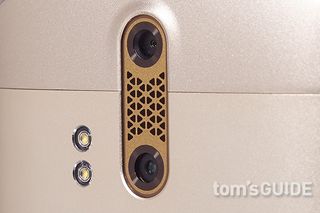
I plugged in my Apple earbuds and was impressed by how good my tracks sounded. Selena Gomez's sultry crooning in "Good For You" was delightfully clear, and the booming bass outclassed that from my iPhone 5s. Plus, I could hear softer background instruments more clearly through the Axon.
Everything sounded even better when I switched over to the JBL earbuds. I noticed louder music with clearer vocals, with the Axon still providing fuller audio with stronger bass.
MORE: Apple Music vs. Spotify: Streaming Services Compared
When I used the included Dolby Audio app to change sound profiles, Gomez's voice was less prominent, but still clear, in the Movie and Game modes. I also noticed a significant bass boost in the Music profile.

Even though the hi-fi sound is only supposed to be available via in-ear headphones and not through the phone's solo speaker on the front, the Axon Pro still pumped out impressively clear sound. Alexis Cole's voice was velvety smooth in "Ain't We Got Fun," and the light rhythmic cymbals in the background were beautifully distinct. I also appreciated how Demi Lovato's voice was not drowned out by the instruments in "Cool for the Summer."
Software and Apps
The Axon Pro runs Android Lollipop with ZTE's own interface on top. Swipe up from the home page to see a summary screen of the music you're playing, your frequent contacts, your fitness data and news headlines. It's a nice touch that I found most helpful for quickly contacting my friends and seeing my step count.
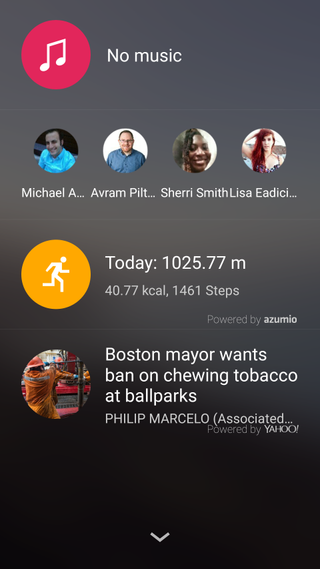
However, parts of the software seem a little odd. For some reason, regardless of whether I had the phone set to mute, vibrate or ring, taking a screenshot always caused a loud chiming sound. I couldn't disable this sound in Settings, either, and it happened even when I had the Notifications sound set to nothing. Even after I turned off the camera-trigger sound at ZTE's suggestion, the chimes didn't go away.
Also, although I had Auto Rotate turned on, the phone sometimes wouldn't flip the orientation when I was in the Camera or Gallery apps. ZTE told me the system was designed to not support Auto Rotate in the Gallery app, instead letting you use on-screen arrows to flip your images. This was designed to avoid situations where the display keeps rotating as you're trying to show your friends a pic, but I'd prefer Auto Rotate capabilities.

In addition to typical Android fare such as Gallery, Camera, Calculator and Calendar, you'll get a folder full of Google apps, such as Gmail, YouTube, Chrome and Google Drive. The device also comes with a handful of unnecessary apps, such as Yahoo Sports; RockMyRun, for generating playlists to run to; and Argus, a fitness-tracking app. Unfortunately, you can't delete these built-in apps, but you can disable them. ZTE also includes its own Mi-Moment for note-taking.
Performance
The Axon's 2.0-GHz octa-core Snapdragon 810 CPU, backed by 4GB of RAM, is zippy enough for your daily needs. I switched between playing my favorite mobile game, Does Not Commute, and watching a YouTube video without lag. However, I noticed a delay when I tried to clear all of the 10 apps I had open.
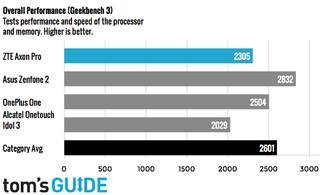
On general performance test Geekbench 3, the Axon's score of 2,305 is poorer than the average smartphone score (2,465), the quad-core Intel Atom-powered ZenFone 2's 2,832 and the quad-core Snapdragon 801-equipped OnePlus One's 2,504. The Axon fared better than the Onetouch Idol 3 (2,029), which uses an octa-core Snapdragon 615 chip.
MORE: Smartphones with the Longest Battery Life
The ZTE device was also slow on our video-editing test. It transcoded a 204MB movie from 1080p to 480p in 9 minutes and 26 seconds. That's slower than the average smartphone (6:32), the Idol 3 (8:22), the OnePlus One (5:58) and the ZenFone 2 (3:40).
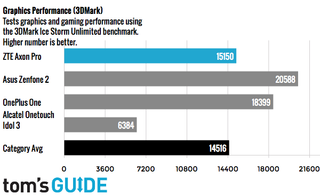
You'll enjoy good enough graphics for casual gaming on the Axon Pro. Its 3DMark Ice Storm Unlimited score of 15,150 is better than the smartphone average (15,033) and the Idol 3 (6,384), but worse than the OnePlus One (18,399) and the ZenFone 2 (20,588).
Camera performance

ZTE is stepping up its imaging game, squeezing a dual-camera setup onto the Axon Pro. A 2-megapixel shooter captures exposure and depth-of-field information, while a 13-MP camera takes the pictures. In general, the Axon took clear, well-exposed shots; red buildings and a light-blue sky looked true in my snapshots, and far-off windows were clear.
These pictures are good enough for Facebook or Instagram, but if you look more closely, you'll find some distortion around edges that makes the subject look less sharp.

This issue gets more obvious in low-light photos. While my picture of a rooftop bar is bright and colorful, pink flowers in a box are splotchy, and a woman's neck in the bottom-right corner looks like a bunch of brown spots.

I saw similar splotches in a picture of two friends at the bar. You can see their faces and recognize them, but the image has a muddy quality to it that makes the scene look like it was made out of clay.

Oddly enough, setting the camera to Bokeh mode solves this problem. My shot of a glass against the Manhattan skyline has a crisp foreground, while the background is blurred out to create a shallow depth-of-field effect.
The 1080p movie I shot was clear and bright, and yellow cabs zipping by on Manhattan streets looked accurate. The Axon Pro also shoots 4K video at 30 frames per second; a clip I recorded in that resolution showed similarly vivid colors and sharp details, at least on a 1080p monitor and the phone's own quad-HD screen.

Up front, the 8-MP camera snapped bright, colorful selfies that accurately showed off my brown hair and blue dress. Even individual strands of hair looked clear.
Camera software
Like most flagship smartphones, the Axon Pro offers a bunch of modes in its camera app. There's Manual mode for finer control over settings, such as ISO light sensitivity and exposure compensation, and Multi Exposure for picking multiple points of reference to evaluate exposure for a scene.
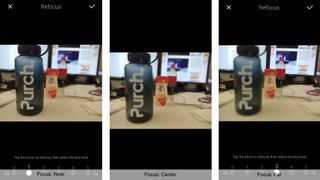
Because of the dual-camera setup, the Axon Pro can offer a Bokeh mode that lets you refocus your image after you shoot it. I love this feature because of the beautiful blurred background effect it creates. It's like Samsung's Selective Focus tool, except you can choose anywhere in the picture to keep sharp instead of just Near Focus, Far or All.

Bokeh mode works extremely well: I tapped various parts of the picture and watched as the image's focus shifted. It even worked on a picture without a clear foreground and background, keeping my colleague's head sharp while blurring everything around him.
MORE: How Many Megapixels Do You Really Need?
Unfortunately, that's where the fun stops and the weirdness begins. First, Manual mode doesn't have autofocus, so you'll have to tap on a part of the screen to take a sharp image.
When the front shooter is activated, you'll have options to turn on Beauty Face for enhancing your visage, and Smile Detection, which takes a shot when it detects a smile. However, Smile Detection is a little too enthusiastic — it snapped a photo even when I was smacking my lips together. It also takes multiple pictures in rapid succession, even as I was changing my facial expression. All of the pictures below were captured with the Smile Detection mode enabled, and I smiled in none of them.

While most smartphones today come with some form of selfie-enhancing software built in, only the Axon Pro made me exclaim, "Those are not my eyes!" On the default setting of Beauty Face (level 3), my portrait looked like it was ripped out of the pages of a Japanese manga (comic book).
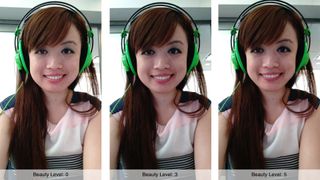
I prefer the more subtle touches in Samsung's and LG's flagships.
Battery Life
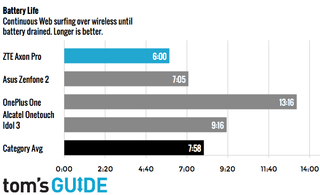
The Axon Pro's biggest shortcoming is its lack of endurance. The phone's 3,000-mAh battery lasted a mere 6 hours on our battery test, which involved continuous Web surfing over AT&T's 4G network at 150 nits of screen brightness. The Axon Pro has less stamina than the average smartphone (8:24), the ZenFone 2 (7:02), the Idol 3 (9:16) and the OnePlus One (13:16).
Bottom Line
The $449 Axon Pro has some standout features, but ultimately, it left me unexcited. It offers a sumptuous display, outstanding audio and a camera that lets you have a lot of fun with focus. However, a polarizing design, short battery life and some software annoyances hold it back. I also want better picture quality, especially given the dual-lens setup.
Although it's plastic, the $299 Asus ZenFone 2 has superior performance, more helpful software, a better camera and longer battery life. Want a phone that can last all day? The OnePlus One clocked more than 13 hours on a charge, and offers a great camera and the nifty Oxygen OS. Those who want an awesome multimedia experience will really like the Axon Pro's unbeatable display-and-audio combo, but there are better options for your money.
Cherlynn is Deputy Editor, Reviews at Engadget and also leads the site's Google reporting. She graduated with a Master’s in Journalism from Columbia University before joining Tom's Guide and its sister site LaptopMag as a staff writer, where she covered wearables, cameras, laptops, computers and smartphones, among many other subjects.
